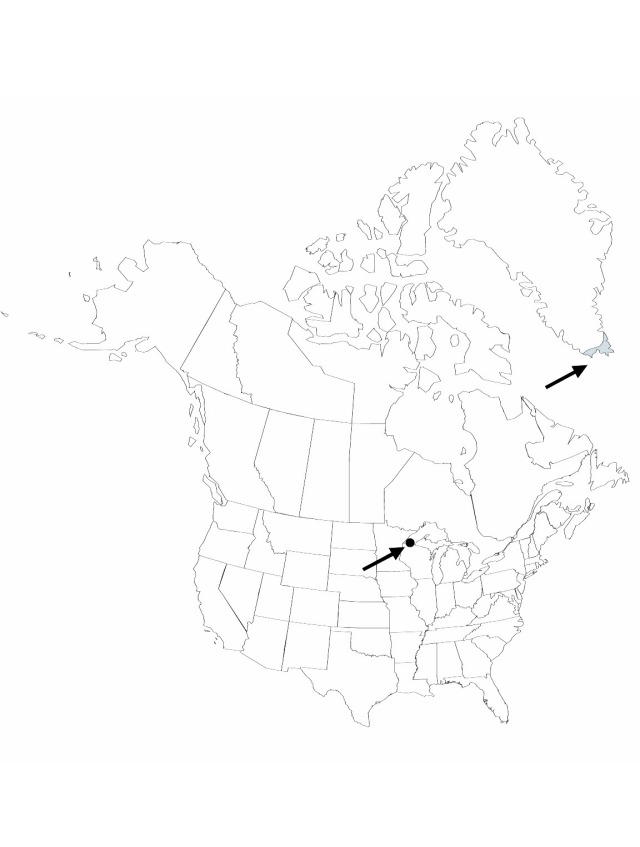Herbs, perennial, cespitose to mat-forming, 2–5 dm. Rhizomes short, nearly erect, branching. Culms 1(–2). Cataphylls 2–4. Leaves basal, 3–6; auricles 0.2–0.4 mm, membranous to scarious; blade arcuate, spreading, grayish green, channeled, 7–30 cm × 1–2 mm, nearly leathery, margins entire. Inflorescences terminal, 7–40-flowered, somewhat loose, 3–10 × 1–2 cm; primary bract usually shorter than inflorescence. Flowers: pedicels 0.5–2 mm; bracteoles 2; tepals brown to blackish, 4–5.5 mm; outer and inner series nearly equal, apex obtuse to nearly acute; stamens 6, filaments 0.5 mm, anthers 1.5–2 mm; style 0.2 mm. Capsules brownish, 3-locular, ovoid to ellipsoid, 4–5 × 2.3–3 mm, nearly equal to perianth. Seeds brownish, ellipsoid, 0.6–0.9 mm, not tailed. 2n = 42.
Phenology: Flowering and fruiting late spring–summer.
Habitat: Moist, open sites and bogs, occasionally disturbed areas
Elevation: 20–200 m
Distribution

Introduced; Greenland, Wis., native, Europe.
Discussion
Selected References
None.